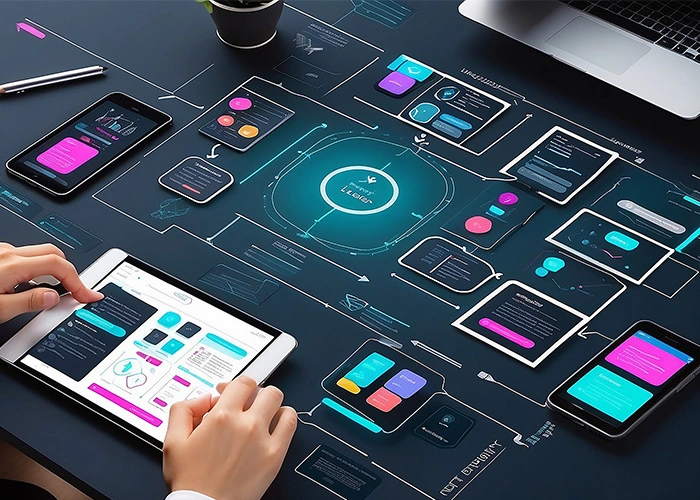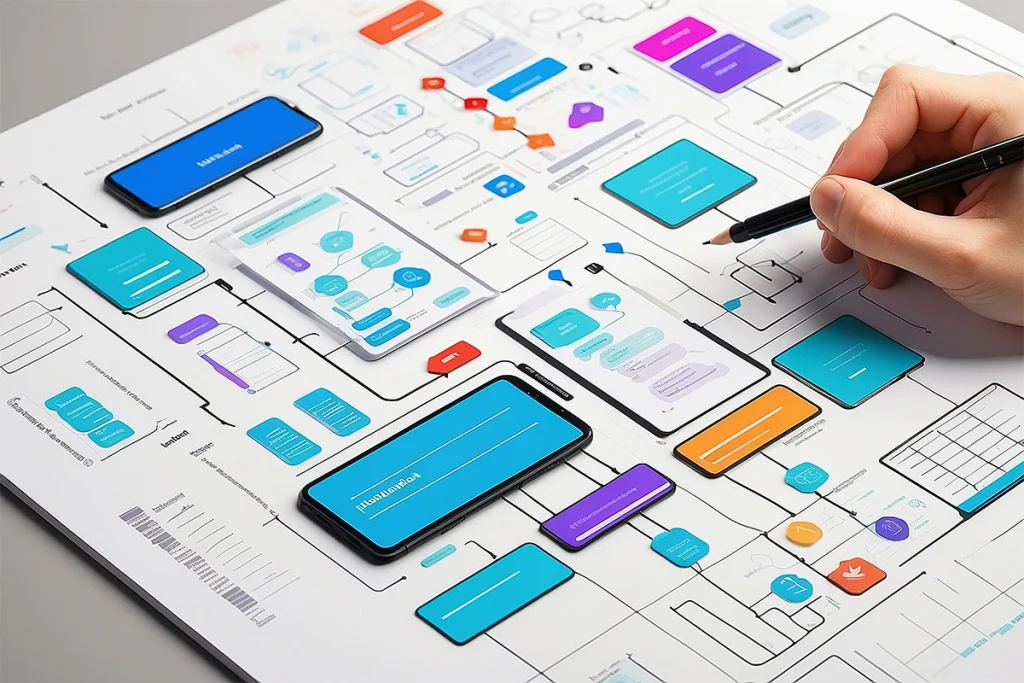In the rapidly changing world of technology and design, the art of creating successful products depends heavily on the early stages of development. Digital prototyping, an innovative process of combining product and design elements, has emerged as a key technique. It’s a practice that not only brings the skeletal framework of ideas to life but also ensures that the user experience is considered from the start.
Mastering digital prototyping is like the key to unlocking the full potential of your products and design projects. Anyway, this blog will dive into the best practices and techniques for digital prototyping, walking you through the process of turning abstract ideas into tangible, interactive models.
What is Prototyping?
Simply we can define Prototyping as a dynamic and iterative process used in the design and development of new products, in which a preliminary model or prototype is built to test and validate ideas, concepts, and functions. This process enables designers and developers to test different approaches to solving user needs, leading to a hands-on method of rapidly iterating and refining the product based on real user feedback.
Prototypes can vary in complexity from simple wireframes that make the basic structure more complex. And interactive models closely resemble the final product, allowing for thorough testing of user experience and interactions. This process effectively allows teams to effectively address and incorporate user insights and feedback, significantly improving product design and functionality.
Importance of Prototyping
Prototypes are critical in the arena of the process product design ecosystem, acting as a link between abstract ideas and precise solutions. They allow teams to investigate various user interactions and identify potential flaws early. And streamlines the development process and reduces costly errors down the road.
Prototypes improve the efficiency of refining product functionality and aesthetics by allowing for rapid iteration. They play a key role in communicating project ideas to stakeholders and ensuring alignment and support for the intended product. The same process is not only visual but also enables the development of highly functional and user-centric products, thanks to early and iterative testing.
Understanding the Fundamentals of Digital Prototyping
Digital prototyping combines technology and creative product development design process to bring ideas to life quickly. It is based on a design thinking prototype, which emphasises empathy for the user and continuous experimentation. While a thorough understanding of user experience design principles is required, it guides how prototypes are created to ensure they are functional and intuitive, not just visual.
This effective and appropriate approach allows designers to anticipate user needs and preferences, laying the foundation for a product that resonates with the target audience. And this is user-centred from the start, resulting in a prototype that effectively addresses form and function.
Choosing the Right Tools and Software
Key Platforms:
- Sketch
- Adobe XD
- Figma
- InVision
Navigating the vast array of prototyping tools and software requires a strategic approach customized to the specific needs of your project. Facts to consider the fidelity of the prototype, the required level of user interaction, and the technical expertise of your team.
Major platforms such as Sketch, Adobe XD, Figma, and InVision each provide unique functionality for different aspects of digital prototyping. Evaluate these options against your project goals and team expertise to ensure a smooth design process. Either way, choosing the right tools can speed up the process of prototyping significantly, allowing you to focus more on innovation and refining the user experience.
Methods for Developing Prototypes
Depending on the complexity and requirements of the project, several methods can usually be adopted to develop prototypes. Few are,

- Paper Prototyping: This involves drawing or sketching the interface and key functions on paper or a whiteboard.
- Interactive Wireframes: Basically, it uses specialized tools or software to create static or clickable representations of the product’s interface.
- Functional Prototypes: This simulates the main functions of the product.
The process of creating a prototype begins with preliminary designs that establish basic concepts. This progresses to the creation of wireframes, which provide the basic visual structure for the product, and eventually to the creation of more complex models.
As the process progresses, high-fidelity prototypes with interactive elements and animations may be used to closely simulate the feel of the final product. At each step, adopting a problem-solving approach and influencing design thinking is critical, focusing on how each design choice meets the user’s needs and improves their interaction with the product.
Best Practices for Designing a User Interface
In the field of UI design, simplicity and clarity are crucial. Focus on designing interfaces that ease the user journey while reducing cognitive load through intuitive navigation paths. Use a visual structure effectively to direct user attention to key areas of communication. Consistency in design elements, such as color schemes and typography, promotes an organized user experience design principles while strengthening user familiarity and comfort. Use user feedback to refine and adapt the UI, ensuring it meets user expectations and improves usability. Either way, always remember, the goal is to create a seamless connection between the user and the product that allows for a flexible and engaging interaction.
Leveraging Advanced Prototyping Techniques
Exploring more advanced prototyping techniques will help your digital prototypes reach new heights. Incorporating motion design increases interactivity and realism, making the user more dynamic. Creating real-world scenarios using real data can provide invaluable insights into how your product performs under different conditions, thereby improving reliability.
In addition, virtual or augmented reality technologies can be used to create immersive experiences that give users a unique perspective on the product. These innovative methods not only push the limits of traditional process prototyping but also increase the user’s interaction with the prototype, providing a richer, more detailed preview of the end product’s capabilities and functionality.
Navigating the Iteration Process
The essence of digital prototyping is to embrace a cycle of feedback and improvement rather than achieving perfection on the first try. Iteration is an important step in evaluating the prototype, absorbing feedback, problem-solving and design thinking and identifying areas for improvement.
By frequently adjusting the design in response to user feedback and test results, the product gradually adapts to user needs and project goals. This iterative process is central to the design thinking and product development approach. This is critical to turning the prototype into a functional and user-centric final product.
Conclusion
In conclusion, mastering digital prototyping allows you to create exceptional user experiences. Cuneiform Consulting’s team of experienced designers and developers can guide you through every stage of digital prototyping, from understanding user needs to selecting the right tools and creating high-fidelity prototypes. We believe in the power of user-centred design and iterative development, and we’re here to help you bring your vision to life.




